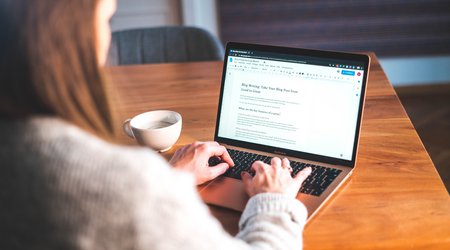What are the key features of a great blog post?
Grab the reader’s attention in the intro
The first sentences of your blog post are your chance to capture your reader’s attention and leave them wanting more. A great blog either answers the question it poses right in the first paragraph or let’s them know they are going to get it when they continue to read.
Write compelling scannable headlines
Writing impeccable headlines really is an art in itself. With all this feed scrolling our attention spans are zero to none. Before actually full-on reading your blog post, the person will go ahead and scan it.
Which basically means quickly scroll down through it and read anything that catches their eye.
So you better create compelling headlines that not only give the reader an idea of the main points you’re making but grab their attention and keep them entertained.
A great headline:
- summarises the paragraph their about to read
- catches their attention
- gives the reader your general arguments
- entertain
Research, research, research
What most of my clients underestimate is the amount of time that needs to be spent on research. But the thing is that the relationship between the amount of time spent on research and the quality of content produced looks a lot like this:
Which is why you need to invest at least the same amount of time in research as writing the actual blog post.
You should research:
- Relevant keywords
- Similar blog posts
- Topics your readers are interested in
- Quality sources you can link to
A great starting point is to Google the subject of your blog post and check out the first page of results. Essentially this is your competition. Ask yourself - what are they missing, what could be improved? Basically, what can you do to be just as good better?
Give credit where credit is due
No one likes a copycat - so come up with your own ideas and give credit when it’s due. Research is a great source of inspiration but nothing more.
Do however feel free to sprinkle your blog post with quotes from credible sources (and don’t forget to mark or link them). It gives your arguments strength and Google is a fan of linking too. The same goes for any use of photographs or images.
Variate your structure
See those bullets below? I put them there for a reason. Using different structures makes reading it more fun and easier to digest.
So be sure to make use of:
- Bullet points
- FONTS
- “Quotes”
- Italics
- Bold
- Sizes
Avoid a long block of text - break it up as much as you can while keeping an overall consistent look.
End with a call-to-action
(You’re still reading - yay!) Now it’s time to ask yourself what do you want the reader to do once they’re done reading? What are you trying to achieve by writing this post? What is the main lesson your readers should take away from it? What do you want to recommend them to do? Summarise your main idea in the last paragraph and point your reader in the right direction.




